Opana Radar Site story still resonates from 1941
When you think of the media and its role in our democracy, remember the Capital Gazette
Please consider supporting The Front Page with a paid subscription: HERE
We landed at Honolulu International Airport on Dec. 7 this year and two days later made the trip to Pearl Harbor to learn more about the day that will live in "infamy" and its lasting place in American history.
It was my third trip to Pearl Harbor.
Five years ago, I learned about the Opana Radar Site for the first time and how its early warning might have changed the course of history if the new technology was taken seriously.
Coincidentally, I was staying at a resort near where the radar site tracked the Japanese planes en route to Pearl Harbor. I learned there was a historical marker there. It took a little looking but I finally found the markers overlooking the bay.
When I returned this trip, it was discouraging to see the markers had were isolated from the resort proper and you had to be looking for them to find them.
The story of what might have been resonated with me and I wrote about it five years ago.
Here is my column from Dec. 7, 2019 that was recently published in The Last American editor, Vol. 2.
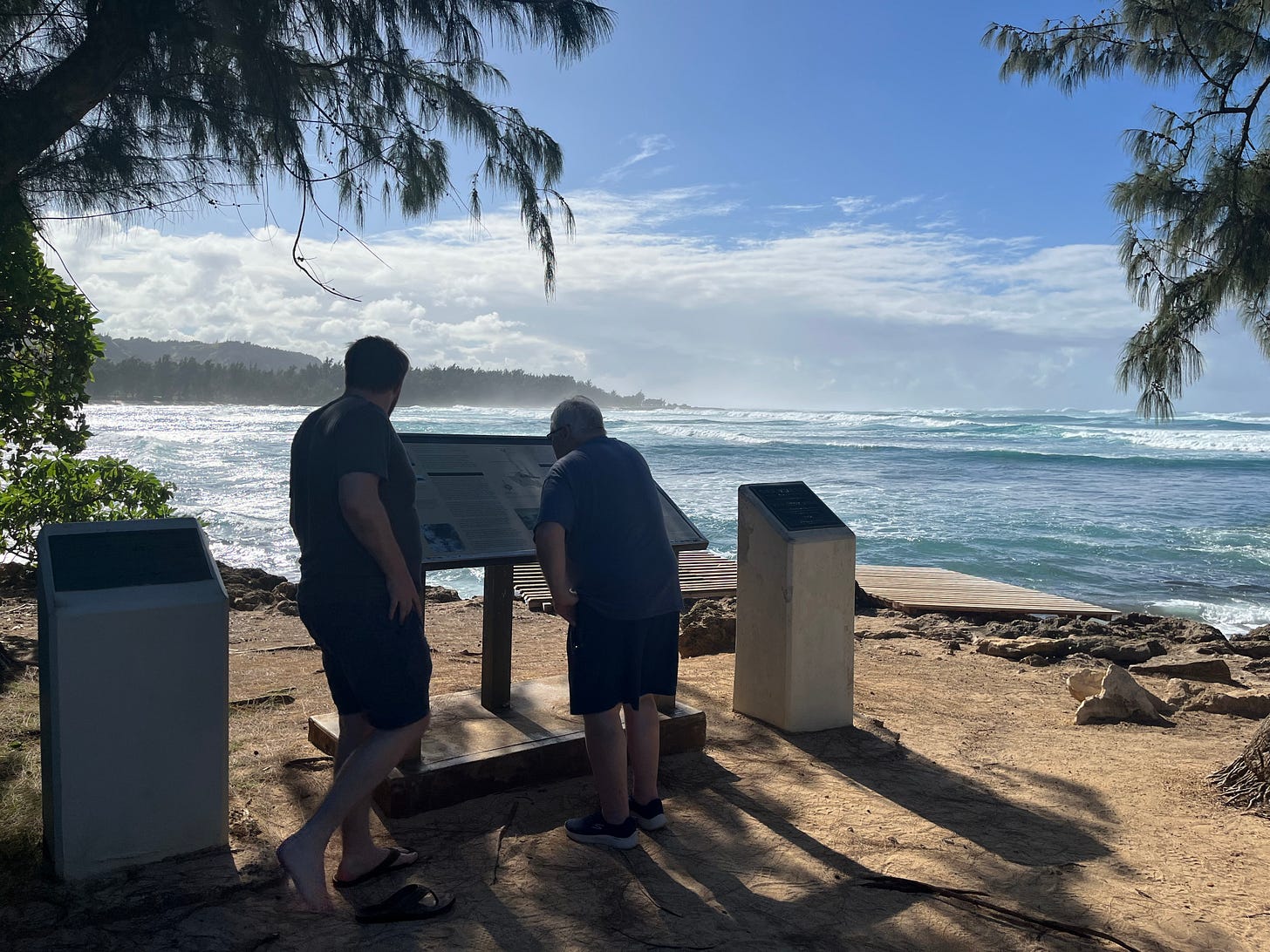
This day did not have to live in infamy
December 7, 2019
Driving to work in the black pre-dawn hours of Dec. 7, 1941, Lt. Kermit Tyler turned on the radio to listen to some music. It was a random act that would change the course of history.
Lt. Tyler was about to begin his 4 a.m. shift at the Information Center at Fort Shafter Army Base in Honolulu when he tuned into local radio station KGMB.
Forty miles away on the north shore of Oahu, Privates George Elliot and Joseph Lockhard were stationed high on a bluff overlooking Turtle Bay, experimenting with a new technology known as radar. The Opana Radar Site was a mobile unit consisting of several military vehicles using the new technology.
At 7:02 a.m., Elliot detected a group of approaching aircraft 132 miles out at sea. What he didn’t know was that it was a strike force of 183 Japanese planes making its way toward Pearl Harbor.
Elliot and Lockhard reported their findings to the Information Center at Fort Shafter, where all but two of the staff had gone to breakfast. This was Lt. Tyler’s second day at the Information Center.
After getting the initial report of approaching aircraft, Lt. Tyler, a pilot with the 78th Pursuit Squadron at Wheeler Field, reasoned that what they were seeing on radar was a group of B-17 bombers due in that morning from San Francisco.
He also remembered a pilot friend of his telling him that KGMB only played music at night so pilots could use the radio beam to help guide them. Using those two pieces of information, Lt. Tyler famously told the Opana Radar operators “not to worry about it.”
Elliot and Lockhard continued to plot the approaching aircraft until they lost track of them at 7:40 a.m.
Fifteen minutes later, the attack on Pearl Harbor commenced.
No warning was issued.
Army planes remained wing-to-wing on the ground.
Navy ships remained motionless in the harbor.
They were all sitting ducks.
The attack crippled the U.S. Navy and catapulted the United States into World War II.
There are few of us who were alive to remember the shock of that attack 78 years ago today, but it remains one of the most significant moments in our history.
Over 2,400 Americans were killed that day. Its only historical equivalent may be the attacks on 9/11.
Hundreds remain entombed in the battleship Arizona, and thousands continue to make the pilgrimage to Pearl Harbor to pay their respects and hear the story of the sneak attack, and how the United States overcame it.
But few have heard the story of the Opana Radar Site and how its warnings were ignored.
On the grounds of the Turtle Bay Resort on the north shore of Oahu, there is a historical marker that recounts the story of that critical early warning, and why Lt. Tyler ignored it. It is just yards from the resort swimming pool.
In the distance, where a naval communications base now stands, is the approximate location of the radar station.
One of the historical markers described Lt. Tyler as “the most misunderstood actor in the drama of Pearl Harbor.”
It goes on to say Lt. Tyler “has been abused by history.”
It concludes that the failure to heed the warning was a failure of organization. There was no way to communicate the information about this new technology in a timely way to those in command.
Radar would go on to play an important role in World War II, but not on Dec. 7, 1941.
Instead of being heroes, the men at the Opana Radar Site became footnotes to what might have been.
P.S.
After reading the historical markers at the Turtle Bay Resort, I hiked along the shore in search of a World War II bunker that was part of Hawaii’s defenses. I found it about a mile away. I was the only one there.
If you look high up on nearby hill, there is a silver dome-like building. It is apparently a restricted naval installation that the public is not allowed to visit. It was up there somewhere where the Japanese planes were first spotted on December. 7, 1941.
Doggie doc
If you love your dog, you probably have wondered more than once what they are thinking.
Or what they think about you? Do they get depressed? Do they really love us?
It's all addressed in the Netflix documentary Inside the Mind of a Dog which chronicles Duke University research used to identify which dogs might be best suited to be service dogs or search and rescue dogs.
It is a fascinating look into the minds of our dear companions so I urge you to check it out.
Watch it with your dog.
Media under siege
There were two important stories Monday that showed the media in a vastly different light.
The first was the obituary of photojournalist named E.B. Ferguson III. He was described in the New York Times obituary as "never the person who was on the hot story," but a meat and potatoes type of reporter who got the job done.
That was never more important than June 2018 when he was having lunch in the mall food court - yes, that's where a newspaper guy would eat - and was informed of shots fired across the street at the Capital Gazette - his newspaper - newsroom.
He went on to set up a portable newsroom in the back of his pickup truck in a parking garage.
Five colleagues had just been killed, but at that moment the most important thing for Ferguson was to make sure there was a newspaper the next day.
It is a reminder of the commitment of a free press.
Please, don't ever forget that.
The next day, Ferguson spoke at a vigil.
“For a moment yesterday, the sword was mightier,” he told a crowd of 200 or so. “But this morning, we put out a newspaper. And we’ll put out a newspaper tomorrow, and the next day, and the next day.”
That is the mission that I know so many of you value.
Yet, in another story yesterday, the incoming president-elect threatened to sue the Des Moines Register because it printed a poll that turned out to be wrong, 60 Minutes for doing what it does with every story it airs - editing an interview (with Kamala Harris) and the Pulitzer Foundation for honoring the New York Times with a Pulitzer Prize for its coverage of Robert Mueller's investigation into Trump's 2016 campaign.
None of that is unusual or close to being libelous. It is what news organizations do.
So I'll leave with the words of Ferguson, who died in November at the age of 70, from that vigil in 2018: “We’ll continue to do our bit to provide real news to better inform citizens in this republic. We are not the enemy. We are you.”
Remember that!
Under way
Ken's excellent holiday adventure has begun.
Sophie and I made the three-hour drive to my brother's home in Connecticut yesterday to complete stage one.
We will be leaving early Wednesday morning to try to avoid as much of the New York City traffic as possible and hope to make it to Richmond, Va. - about a 6 1/2-hour drive - before dark.
We plan to take Thursday off to visit the American Civil War Museum in Richmond and the Petersburg National Battlefield - from the Civil War - in Petersburg, Va.
I will keep you posted.
Ken Tingley spent more than four decades working in small community newspapers in upstate New York. Since retirement in 2020 he has written three books and is currently adapting his second book "The Last American Newspaper" into a play. He currently lives in Queensbury, N.Y.

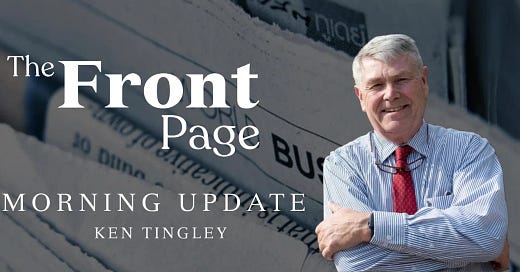



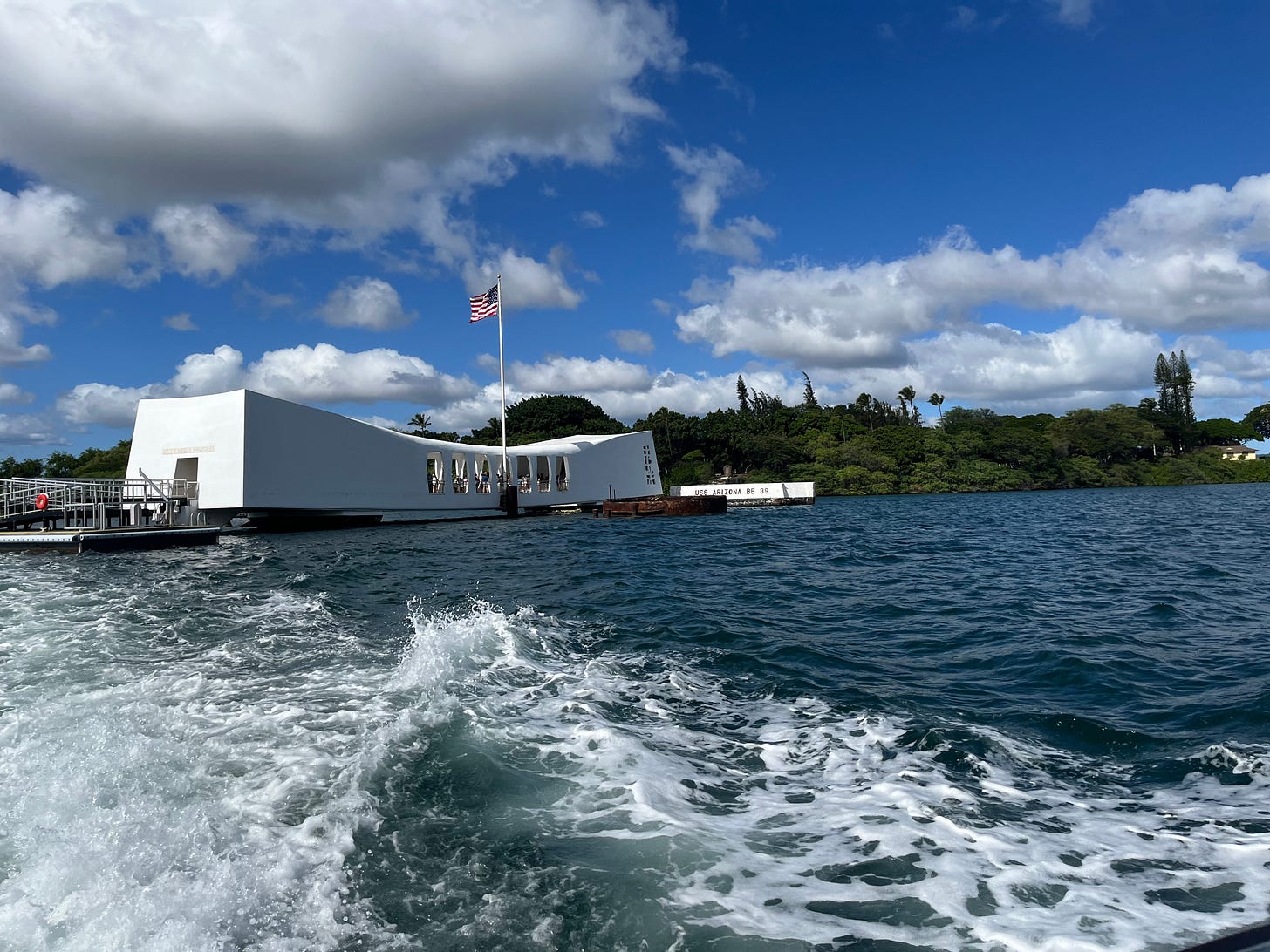

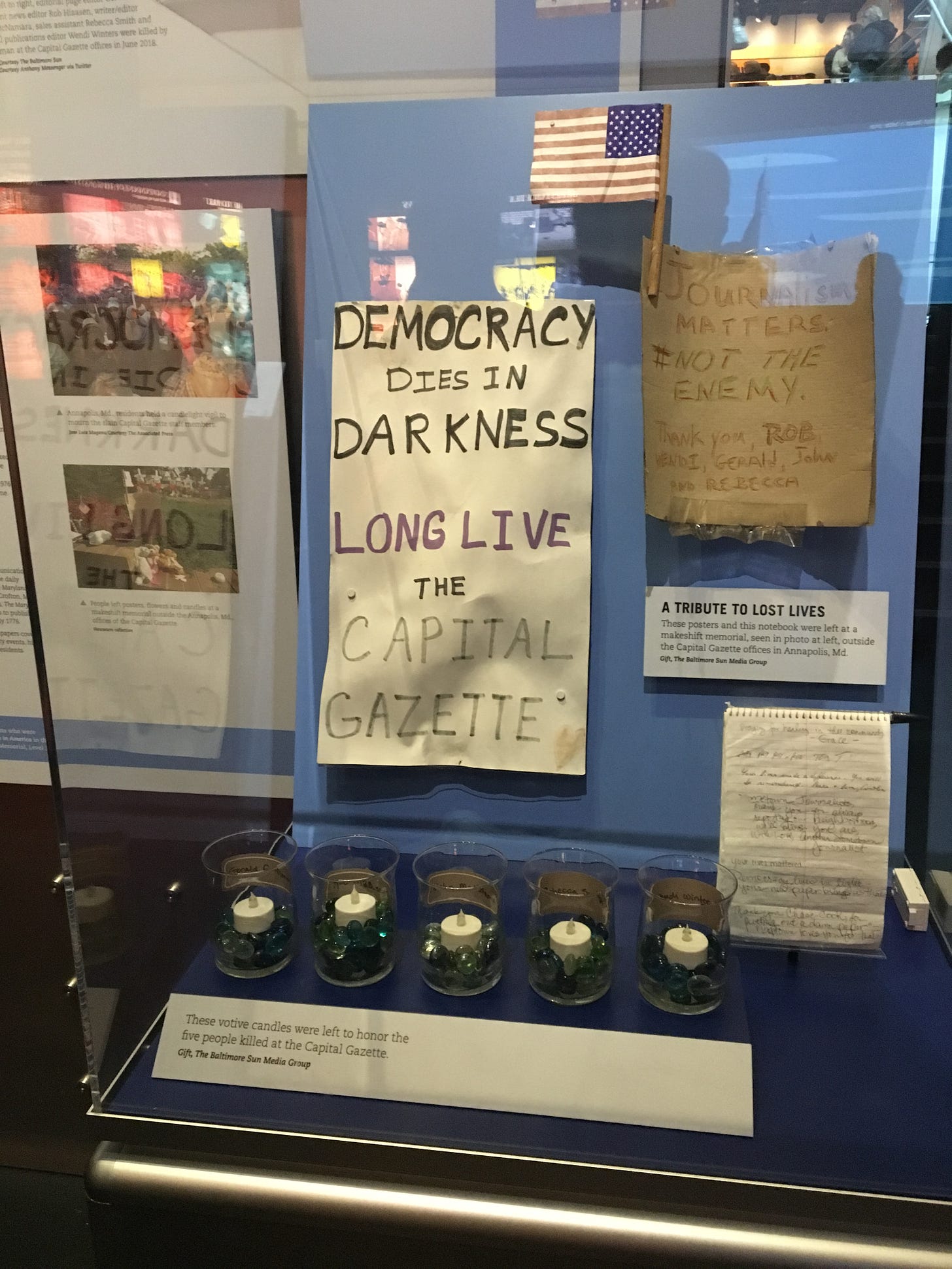
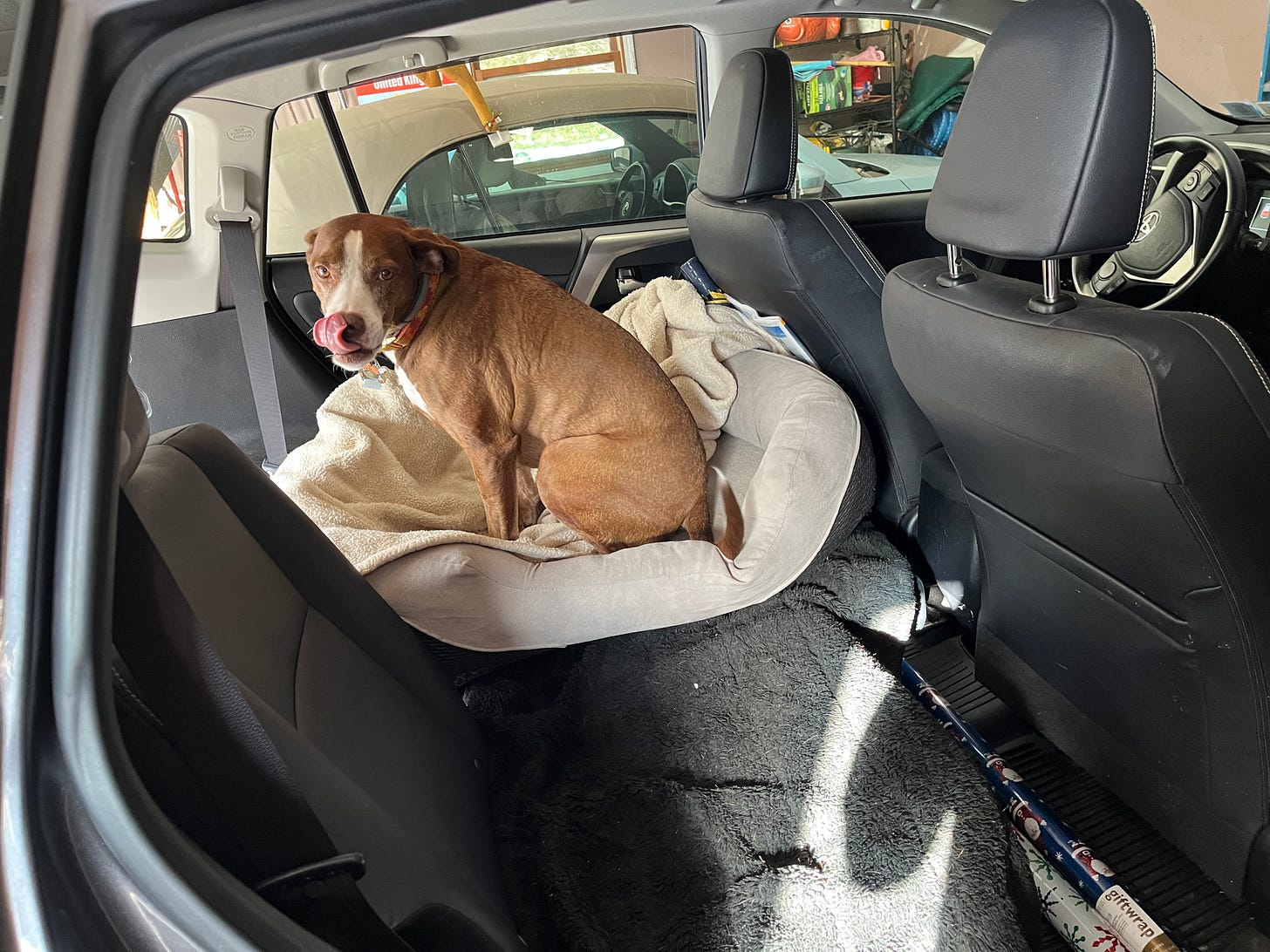
Safe travels and Godspeed Ken & Sophie-look forward to your notes on the road.
Bon voyage! “Travel makes one modest. You see what a tiny place you occupy in the world.” - Gustave Flaubert